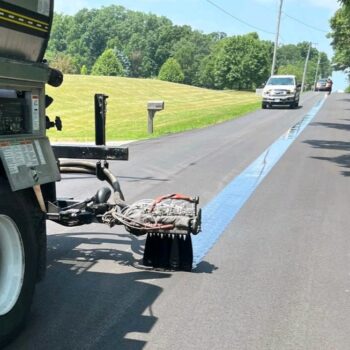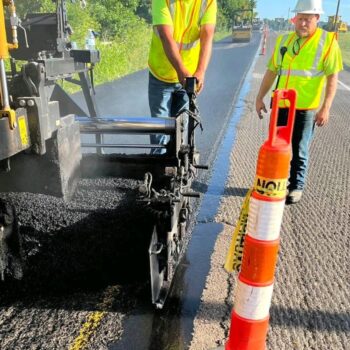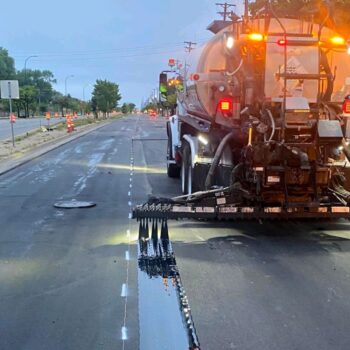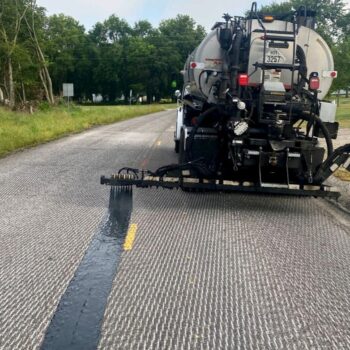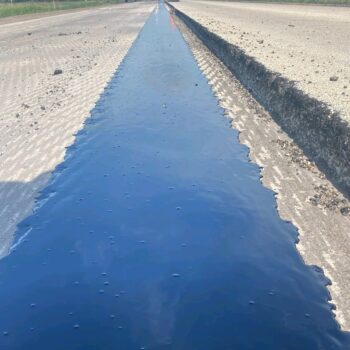Vram
preventing longitudinal joint failure
Longitudinal joints are particularly susceptible to environmental damage. The premature failure of centre line joins and lane to lane joints can be prevented. The longitudinal joints are a systematic design flaw in the paving installation because ,
1, single lane paving mats meet at different temperatures making bonding difficult.
2, The outer 300mm of each mat has reduced compaction creating a higher percentage of air voids.
Applying Vram at the time of construction under the surface where the longitudinal joints will be formed will reduce permeability in the most critical area of your asphalt pavement.
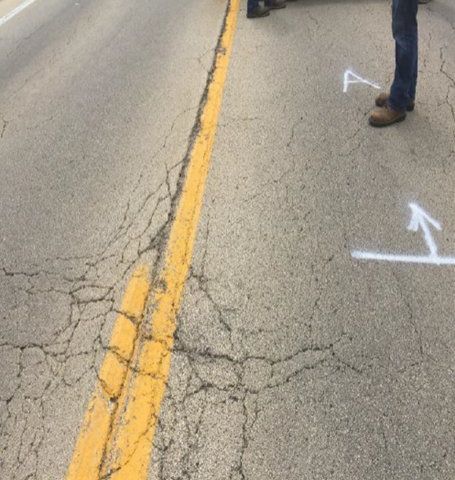
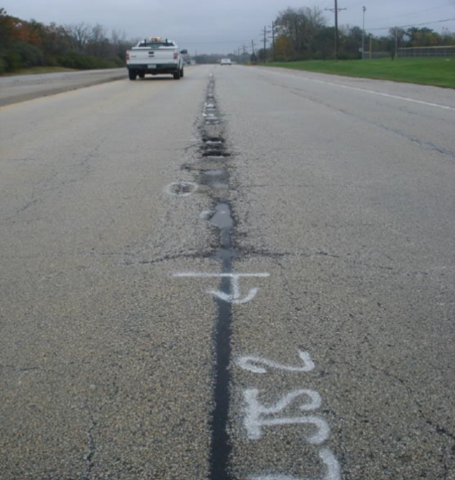
Why longitudinal joints fail.
Poor bonding and lower compaction at the longitudinal joint will lead to top down moisture ingress in the wearing surface and accelerated deterioration. HMA pavements typically have air voids 10% or higher directly at the longitudinal joint and for the first 300mm from the edge. The outer edge of the mat cannot be compressed to the same density of the centre of the mat.
How Vram works.
Vram is applied to the prepared surface at the designated join line before the HMA is placed. When the HMA is placed the heat melts the Vram and it wickers up reducing the air voids within the mat from the bottom up. When the adjoining mat is placed the Vram will wicker up sealing the join between the two mats.
These pictures illustrate how the Vram wickers up through the mat,
Void reducing asphalt membrane
Vram will extend the life of the longitudinal joint and improve the overall life cycle performance of the entire pavement.
This type of construction treatment is now a mandatory requirement in multiple US state DOTsLongitudinal construction joints in asphaltic surfacings are particularly susceptible to environmental damage through water ingress due to higher than desirable air voids. The premature failure of centre line joints and lane to lane joints can be prevented. The longitudinal joints are a systematic design flaw in the paving installation because;
1 single lane paving mats meet at different temperatures making bonding difficult, the colder mat acts as a heat sink for the adjacent hot laid mat with a cold or semi hot joint formed. Fully knitted hot joints are often difficult to achieve in the field.
2 The outer 300mm of each mat has reduced compaction creating a higher percentage of air voids which accelerates weathering and related distresses and wih time allows water penetration leading to localised surfacing failures.
Applying Vram at the time of construction along the construction joint line under the surfacing layer where the longitudinal joints will be formed will reduce permeability in the most critical area of your asphalt pavement. The Vram migrates up through the construction joint line from the bottom up during placement and compaction reducing joint voids
Complete specifications supplied on request.

